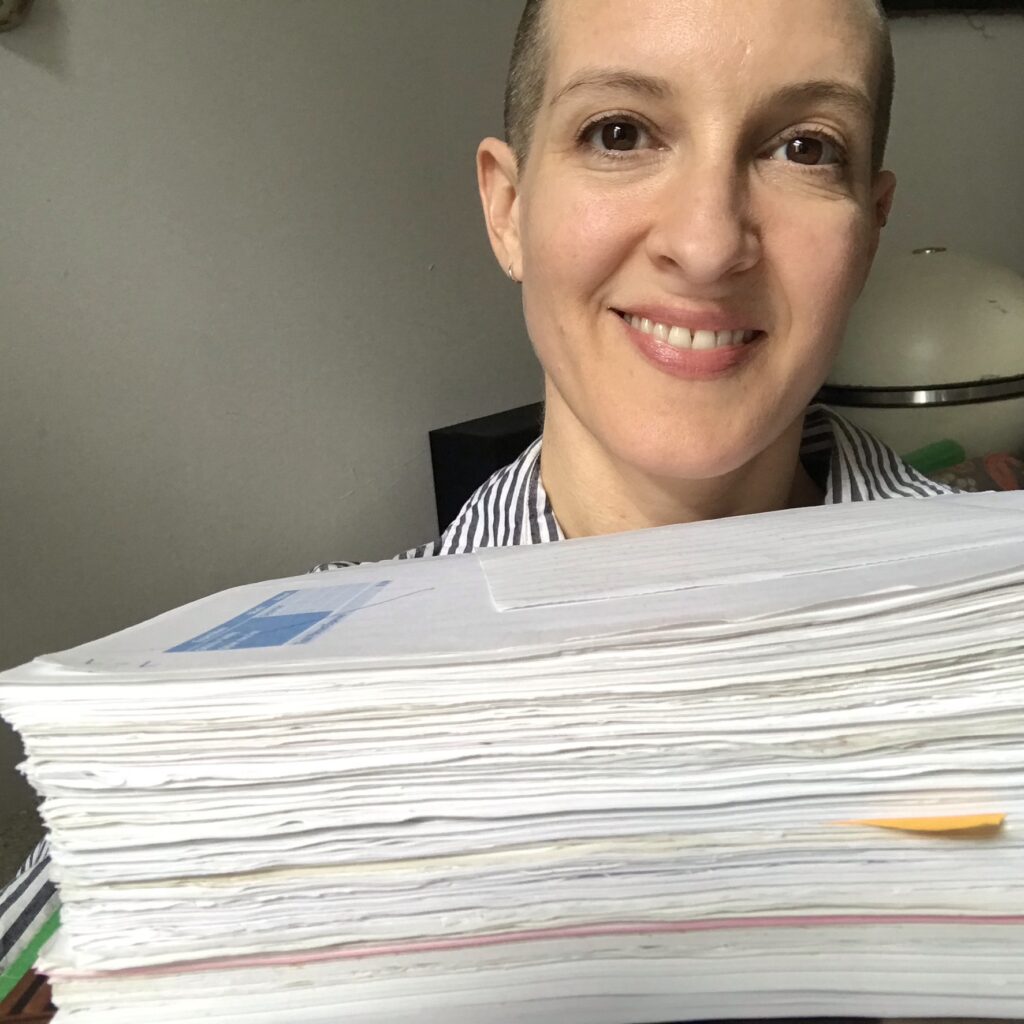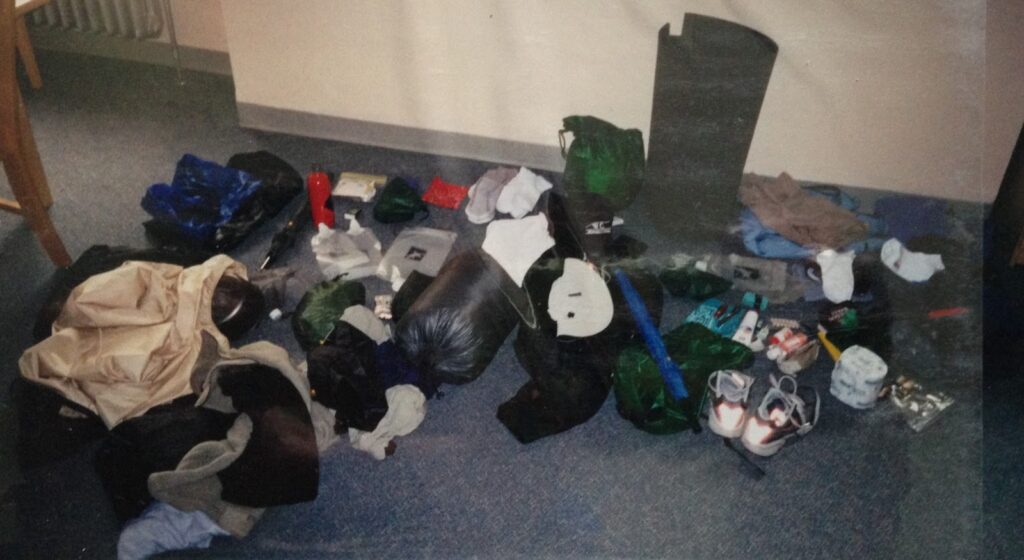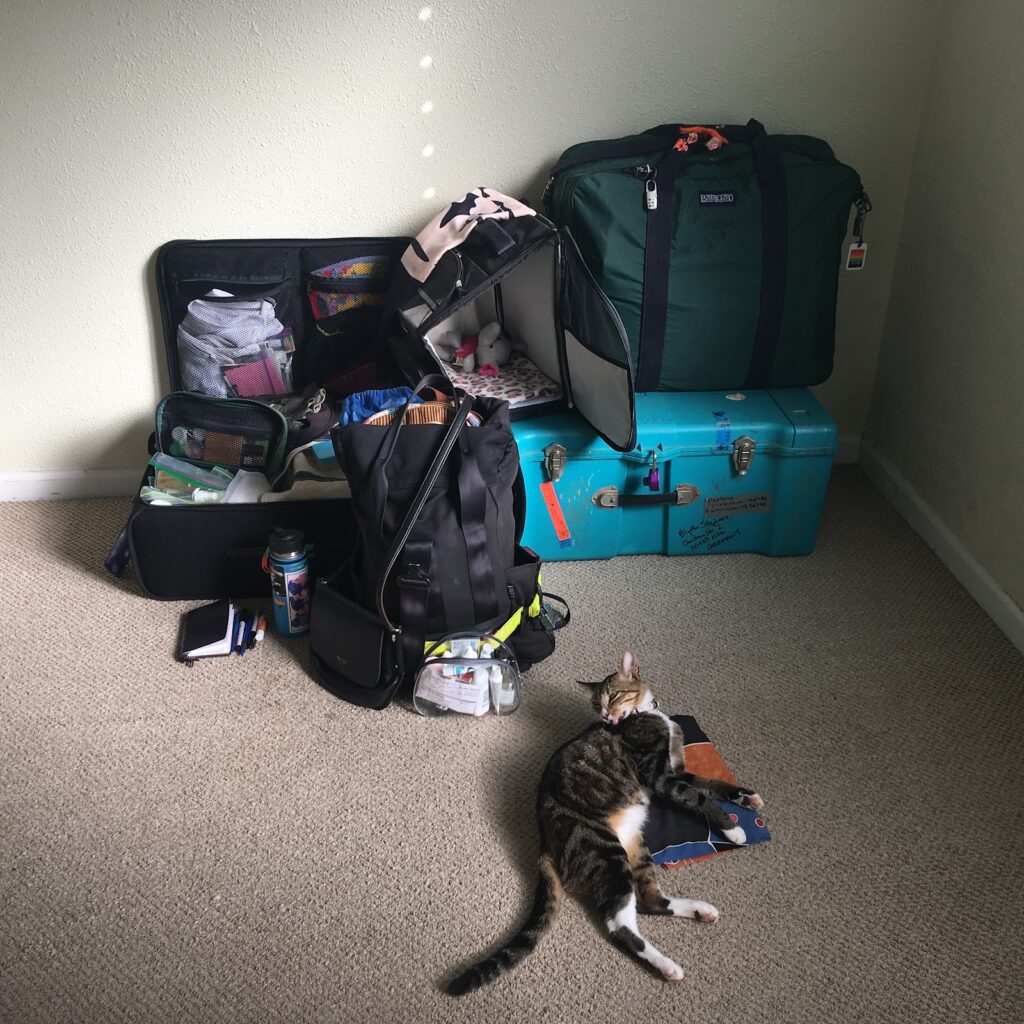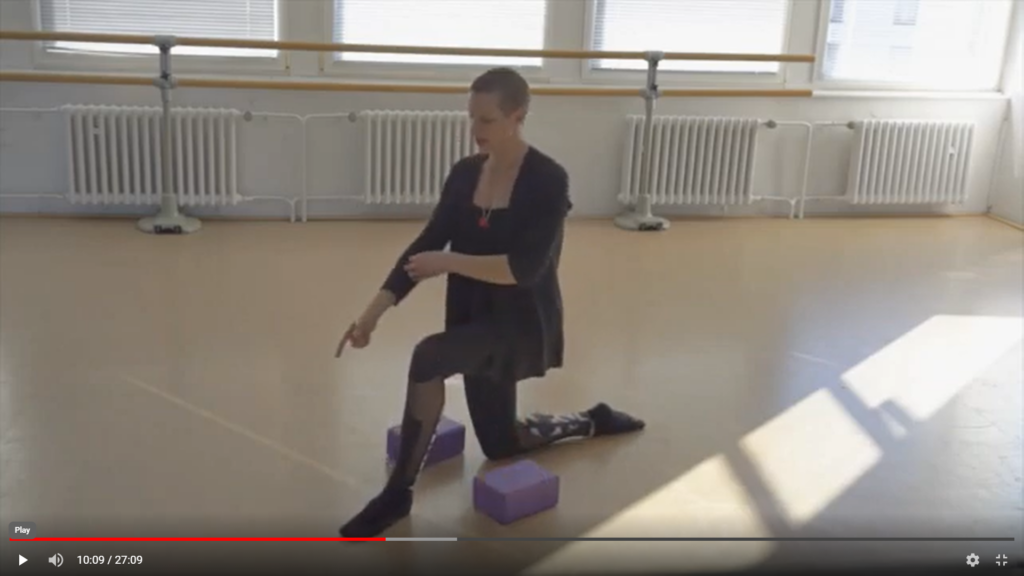Given that I’ve been thinking and researching about this blog for a while, it’s serendipitous that I also just learned a new German saying: “Gehüpft wie gesprungen.”
It means literally “Hopped as jumped,” or more-or-less “It doesn’t matter if you hop or jump to get there.” Sort of like the English “six of one, half dozen of the other” phrase, or in other words, it’s all the same.
Sure, for your average citizen, the distinction between jumping and hopping may be insignificant, but to a dancer of any style it is indeed critical! Here I am defining various forms of jumping in order to help you more easily learn and brilliantly perform jumping steps and combinations in ballet, modern, jazz, tap… really any technique where we leave the ground!
In Episode 047 of the Podcast, linked below, we are exploring ways to understand various types of jumps in ballet, modern dance, and other techniques and I seek to synthesize a categorization system to help dancers learn steps and sequences with ease and pleasure.
Classifying Jumps to learn steps & choreography
These classifications are applicable to all dance styles that change feet or leave the floor with a spring regardless of velocity or amplitude with which they do so. Here I’m taking the definition of the categories which I use in live classes from both ballet text and a modern texts, but have been taught these concepts in jazz and tap contexts as well.
Students report it to be a useful tool to analyze and learn new steps as well as elaborate petit allegro choreography, which is also a wonderful training in musicality (check out my rhythm and musicality for dancers blog for more on that)! 🙂
Jumps which fly and those which barely leave the ground
Ballet Pedagogy diva Vaganova begins by grouping jumps into two large categories, those which just leave the ground and those which soar with ballon: “Jumps in classical ballet are highly diversified. In further study we will see that they are divided into two basic groups. In the first group are the aerial jumps. For these jumps the dancer must impart a great force to the movement, must stop in the air. In the second group are the movements which, without a literal jump, cannot be made without tearing oneself away from the ground. These movements, however, are not directed up into the air; they are done close to the ground.” (Basic Principles of Classical Ballet* p.68)
We use all sorts of small jumps as transition steps in ballet, and they form an important glue or connection between our showier feats, be they languidly suspended extensions or powerful expressions of passion.
Such “Jumps which are not directed into the air but are parallel to the floor,” according to Vaganova, include: “pas glissade, pas de basque, and jeté en tournant (in the execution of the first part of the movement).” (Basic Principles of Classical Ballet* p.68) Although not normally featured prominently, if these connecting steps are not performed well, the whole dance will appear disjointed.
Small & Medium Allegro Tempo
In the book Ballet Pedagogy*, Rory Foster provides a helpful introduction to allegro, or jumping, in the context of ballet. The language of classical music is Italian, while the language of ballet is French, and increasingly the international language of dance teaching is English, so these descriptions get delightfully multilingual!
Foster explains: “Allegro steps are divided into three basic categories: petit or small, medium, and grand allegro. Tempo, more than the individual step itself, plays the defining role for small and medium jumps. Petit allegro includes jumps terre à terre where the feet barely leave the ground, along with small quick jumps without a lot of elevation. Medium allegro consists of the same steps as petit allegro, but is done to a slower tempo or a different rhythm or meter, which allows time for more sustained dynamics and elevation.” (p.48)
Finding the Downbeat
The concept of allegro or “jumps” in dancing is relevant to all dancers, including those who do not jump in the sense of leaving the ground entirely, as it pertains to the dancer’s approach to the rhythm or music.
I learned more about this in a recent presentation by the National Dance Education Organization and the dance company Dancing Wheels on the topic of physically integrated dance. In the session the leaders described and demonstrated a variety of types of translations of movement, focusing on the MEANING of movement and evaluating the execution of said intent in sit-down and stand-up dancers.
Such choreographic translations include direct and indirect translation of movements, temporal translation, spatial translation (such as leap + port de bras), rhythmic translation, relevé/rise/wheelie, tendu/stretch/articulate a limb, and jumps as finding and landing on the down beat. In the demonstration of jumping by a sit-down dancer, the dancer rose up into a wheelie, and bounced her wheels down in the rhythm of the jumping sequence.
[I also appreciated how Dancing Wheels started by breathing together and pointing out that this is one way we ALL can move together, regardless of ability.]
Repertoire of Allegro in Ballet Pedagogy
Next I’d like to talk about the repertoire of jumps specifically in ballet pedagogy, and then I’d like to broaden the categories to include modern, jazz, and all dance styles.
Foster describes the range of types of allegro movements in classical ballet like so: “The repertoire of jumps falls into certain descriptive categories depending on the takeoff and landing of the step. The following are the various categories of jumps along with a few examples:
- Two feet to two feet (sauté, changement, échappé)
- One foot to one foot (jeté, glissade, temps levé)
- One foot to two feet (assemblé, brisé)
- Two feet to one foot (sissonne)” (Ballet Pedagogy p.48)
In the air, one might make a variety of shapes and perform beats or switches with the legs, leading to other specific French terms for steps, but generally jumps can be helpfully grouped into these categories. I do think a couple of other distinctions are also useful, indicating whether the “one foot to one foot” (#2 above) is landing on the same foot that was departed from, or the other one, but we’ll get more into that in a minute.
Vaganova’s Aerial Allegro Categories
Vaganova’s groupings are a bit more complicated, but she includes more detail and nuance, and she provides more examples. She instructs that, “Aerial jumps are divided into four kinds:
- Jumps from both feet to both feet which are subdivided into: (a) those done directly from 5th position, as changement de pieds, echappé, soubresaut; (b) done with a movement of one foot from 5th position to the side, as assemblé, sissonne fermée, sissonne fondue, sissonne tombée, pas de chat, failli, chassé, cabriole fermée, jeté fermé fondu.
- Jumps from both feet to one foot, which have the following subdivisions: (a) when at the beginning the dancer tears himself away from the floor with both feet and finishes the movement on one foot (in a pose), as sissonne ouverte, sissonne soubresaut, ballonné, ballotté, rond de jambe en l’air sauté; (b) when the movement begins with a thrusting out of the leg (a take off) and ends with a stop on the same foot in a pose, as jeté from 5th position, grand jeté from 5th position, jete with a movement in a half-turn, emboîté.
- Jumps from one foot to the other, as jeté entrelacé, saut de basque, jeté passé, jeté in attitude (when it is done from a preparation in 4th position croisé).
- Combination jumps, the structure of which embodies several elements, such as jeté renversé, sissonne renversée, grand pas de basque, double rond de jambe, pas ciseaux, balancé, jeté en tournant and grand fouetté.” (Basic Principles of Classical Ballet* p.68)
In providing all of these classifications and definitions here, I realize they include considerable complexity. Don’t fret, I have existing tutorials and upcoming lessons on all of this available on YouTube (with suggested places to start listed later in this blog) and live in Balletlicious classes on Zoom.
Repertory of Jumps in Modern Dance
In the section of their book on modern dance technique that covers basic locomotor steps (those which travel from one place to another in contrast to axial movements, which remain in one place), Alwin Nikolais and Murray Louis also describe these movements in terms of weight transfer, using mostly plain English and some musical terminology:
“Walking: transferring weight evenly from leg to leg on a level path.
Hopping: locomotion on the same leg, transferring the weight in the air to the same leg. Transferring the weight through an undercurve or overcurve.
Jumping: locomotion on two legs. Transferring weight to both legs. Full turns in the air, landing and pushing off from both legs.
Leaping: transferring the weight from leg to leg in the air. Creating a long, horizontally level path as opposed to an overcurve. The different leaps vary in their character of traveling through the air.”
Skipping: as opposed to a ¾ undercurve, skipping can be a duple or a ⅜ rhythm with emphasis on the push off to upward instead of low transfer of weight.” (The Nikolais/Louis Dance Technique* p.95)
Leaping, or jumping off from one leg and landing on the other, is certainly a different type of jump than a hop from one foot to the same foot. “Hop” can be a confusing term, as in general usage that word can mean a small jump 2:2 feet, or a spring on one foot landing on the same. Using ballet terminology can help clarify, or one may also specify in English when “hop” indicates 1:1 (same) or small 2:2 jumps.
In Dance Technique for Children*, Mary Joyce provides definitions of basic locomotor movements as well, some of which I’ll cite in my future blog/podcast on locomotor basics, but which include allegro of the type we’re discussing today:
“Leap: a run with more time in the air than on the ground.
Hop: Taking off and landing on the same foot.
Jump: landing on two feet.” (p.156)
I would argue that skipping is a combination or compound step of repeating “step, hop” or “slide, hop” rather than its own type of jump, though the term “skip” is certainly helpful in describing this sort of locomotor travel. As I said, more on common locomotor movements in dance coming soon!
Consolidating Allegro/Jump Categories
So, let’s digest all of those ideas so we can use them in class, shall we?Here I’m integrating Foster, Vaganova, Joyce, and Nikolais/Louis’ categories, thus separating jumps from one foot to one foot (1:1) into hops, or those which do not change from one foot to the other, and leaps, or those which spring off from one foot and land on the other foot. The categories I have found most practical to use in teaching are:
- 2:2 (both) / jump / sauté, changement, échappé, soubresaut
- 1:1 (same) / hop / temps levé
- 1:1 (other, switch) / leap / jeté, glissade, pas de chat, saut de chat
- 1:2 (one to both) / assemblé, brisé
- 2:1 (both to one) / sissonne
Strong Feet and Jumping
Nikolais and Louis note the importance of developing strength, sensitivity, and articulation in the feet to the quality of our jumps and dancing in general: “Stopping and starting need tactile feet that can touch, land on, and grip the floor to move quickly and accurately and hold a movement. Weight is always forward so that there is an immediacy of movement.” (Nikolais/Louis Dance Technique* p.172)
Allegro Technique
Vaganova provides technical pointers on executing sparkling ballet allegro:
- “Every jump begins with demi plié. Since the main factor in imparting force at the moment of leaving the floor is the heel, it is necessary, at the development of the jump, to pay special attention to the correctness of demi plie, i.e. one must see to it that the heels are not lifted from the floor in demi plié.
- If the jump is done on both legs, the legs must be forcefully extended in the knees, arches and toes at the moment of the jump. If the jump is done on one leg, the other assumes the position required by the pose. […]
- After the jump the feet must touch the floor first with the toe, then softly with the heel, then lowered into demi plié. After this the knees should be straightened.” (Basic Principles of Classical Ballet* p.69)
Expanding Jumping Repertoire
In classical ballet, beats or batterie can be added to all jumps (Vaganova has a whole chapter on beats!), creating virtuosity and greater vocabulary for dancing. As other elements of dance are integrated into allegro in various ways–such as spatial levels, facings & changes of direction, time factors, energy and so forth–further expressive and artistic possibilities emerge.
This is true of all styles of dance including ballet, modern dance, jazz and other styles. In tap, the movements of jumping are also heard!
Jumping & Allegro Resources
To learn more about jumping and practice basic jumping techniques, I’ve created a variety of other resources on the blog, podcast, and on video.
YouTube Channel
“Saucy Prances & Sautés,” “Glissade & Assemble Jumps,” & “Frothy Frappé & Jeté” videos, as well as the playlists:
“Legs, Legs, Legs,” “Foot & Ankle Conditioning,” & “Ballet Barre” for training and technique basics.
Podcast
Episode 014: Powerful Pliés, 020: Sauter, Jumping & Leaps of Faith, 021: Glisser – Smoothly Gliding, & 022: Élancer – Swiftly Darting
Blog
Sauter, Jumping, & Leaps of Faith, Glisser – Smoothly Gliding into Autumn, & Élancer – Swiftly Darting
I hope you enjoyed this exploration of jumping categories in ballet and modern dance and find them applicable to other styles of dance you may practice. Keep your eyes peeled for more on locomotion, focus, other elements of dance and life coming soon, and let me know what you’d like to see from me in the future!
Blythe Stephens, MFA
she/her or they/them
A Blythe Coach:
move with balance, grace, & power
** This blog is not sponsored. Amazon Affiliate links potentially give me a percentage of the purchase price.
DISCLAIMER: A Blythe Coach recommends that you consult your physician regarding the applicability of any recommendations and follow all safety instructions before beginning any exercise program. When participating in any exercise or exercise program, there is the possibility of physical injury. If you engage in this exercise or exercise program, you agree that you do so at your own risk, are voluntarily participating in these activities, assume all risk of injury to yourself.










